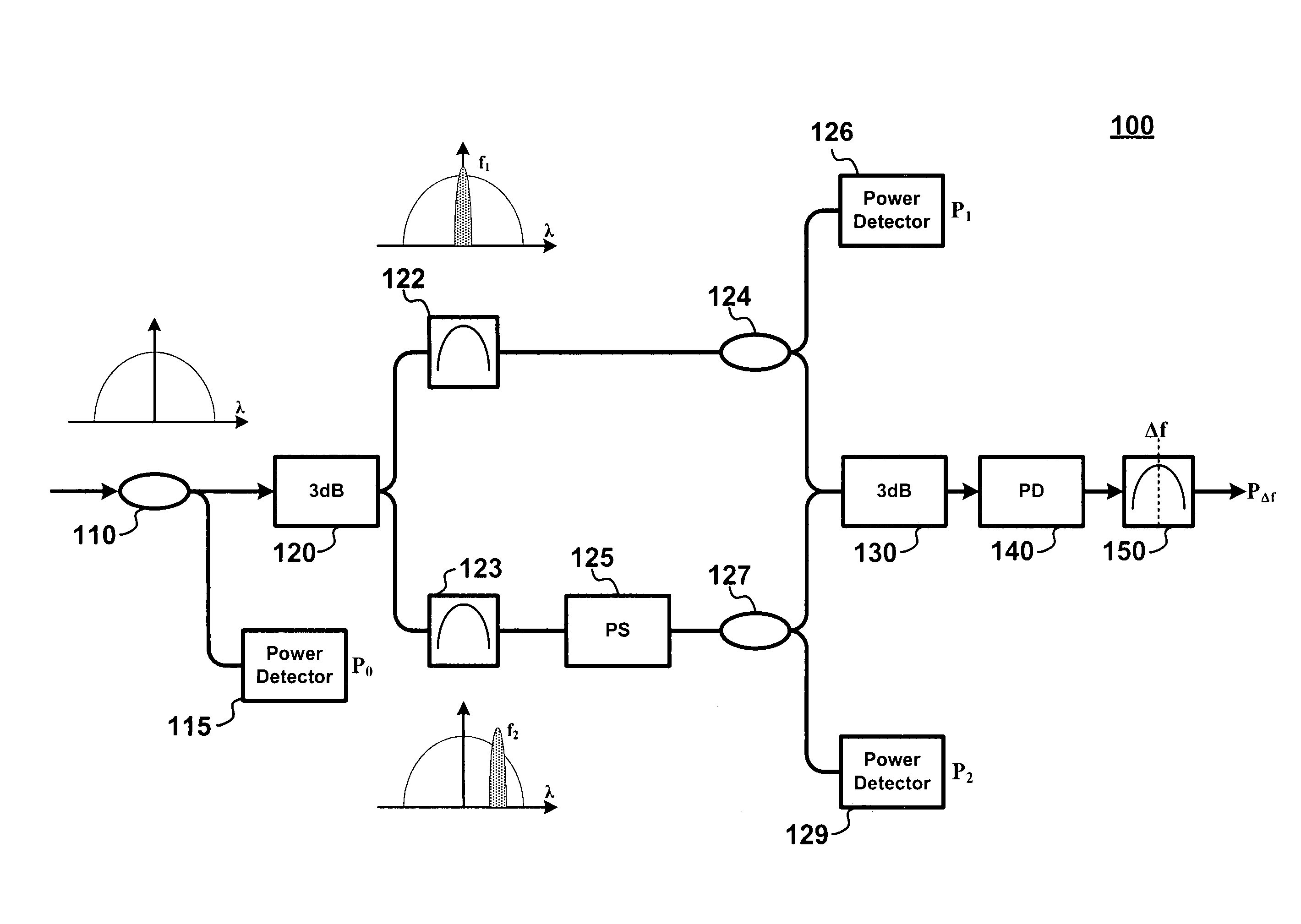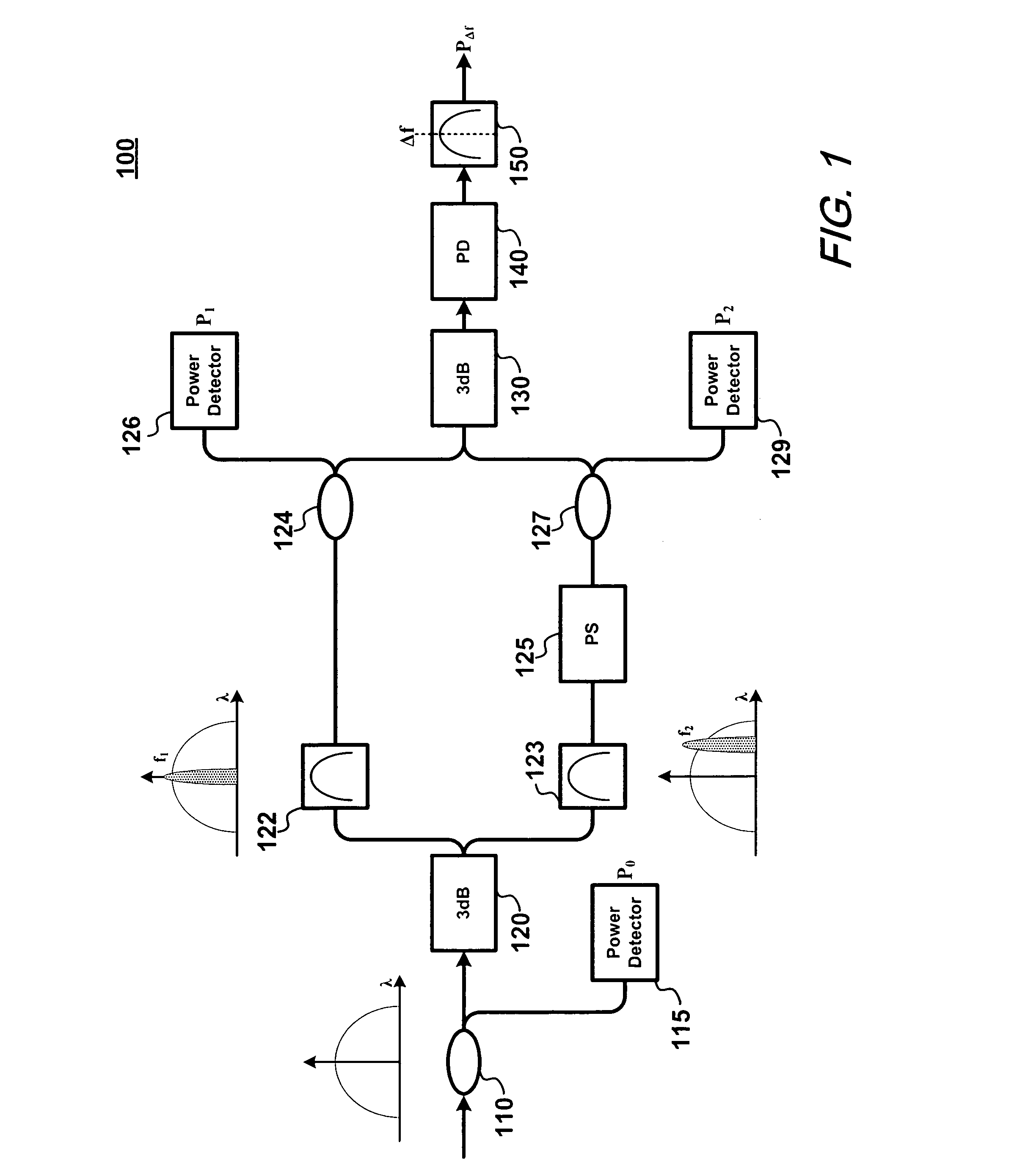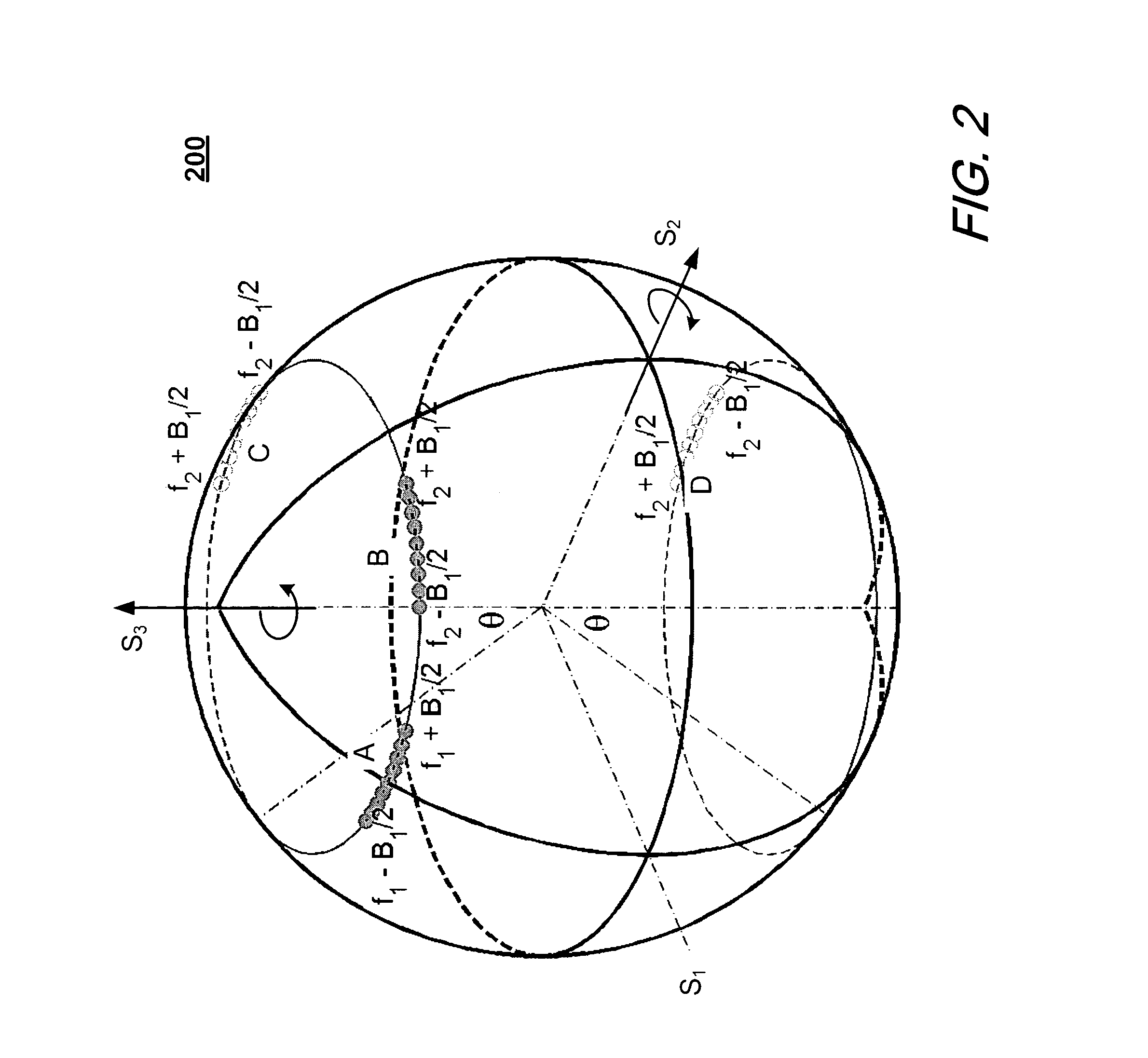Orthogonal heterodyne optical signal-to-noise-ratio (OSNR) monitoring method and apparatus
- Summary
- Abstract
- Description
- Claims
- Application Information
AI Technical Summary
Benefits of technology
Problems solved by technology
Method used
Image
Examples
Embodiment Construction
[0017]FIG. 1 shows a schematic of an optical apparatus 100 which we will use to demonstrate and explain our inventive optical signal-to-noise-ratio measurement method. With reference to that FIG. 1, it is shown that an input optical signal is first “tapped” by optical coupler 110 such that a power measurement of the input signal P0 is made by power detector 115. The input signal is subsequently split through the effect of 3 dB coupler 120 and the split signal(s) sent into separate “branches” (Branch 1—Upper; Branch 2—Lower) of our apparatus.
[0018]In each of the branches, there is positioned a narrow bandwidth optical filter 122, and 123. As shown in FIG. 1, the center frequency of the two filters is represented as f1 and f2 and their bandwidth(s) B1 and B2, respectively. In addition, the two optical filters are non-overlapping, that is, Δf=|f1−f2|>(B2+B1) / 2.
[0019]In upper Branch 1, an optical signal exiting the narrow bandwidth optical filter 122 is tapped through the effect of coup...
PUM
 Login to View More
Login to View More Abstract
Description
Claims
Application Information
 Login to View More
Login to View More - R&D
- Intellectual Property
- Life Sciences
- Materials
- Tech Scout
- Unparalleled Data Quality
- Higher Quality Content
- 60% Fewer Hallucinations
Browse by: Latest US Patents, China's latest patents, Technical Efficacy Thesaurus, Application Domain, Technology Topic, Popular Technical Reports.
© 2025 PatSnap. All rights reserved.Legal|Privacy policy|Modern Slavery Act Transparency Statement|Sitemap|About US| Contact US: help@patsnap.com



